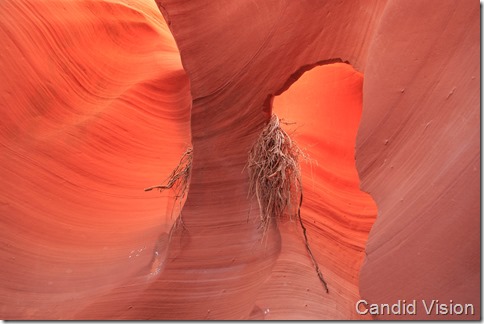Pretty much everything I read about this canyon proudly notes that it’s the most photographed slot canyon in the world. And it is lovely. The top of this canyon is narrower letting in less light than nearby Rattlesnake Canyon. This meant almost mandatory use of a tripod and longer exposures. There are also a lot more people travelling through these canyons. Several companies offer tours and while most cooperate, having people wander into the last five seconds of a thirty second exposure occurred more than once. Again Nate was good about working to get us (another photographer joined the tour for this canyon) good angles and helping to keep the shot clear working with the other guides. Going for a photo tour definitely helped there as I don’t think I’d been nearly as happy trying to do photos on a “regular” tour.
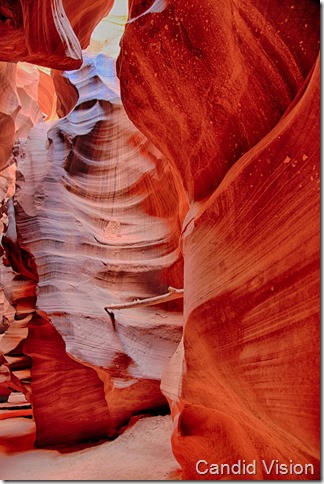
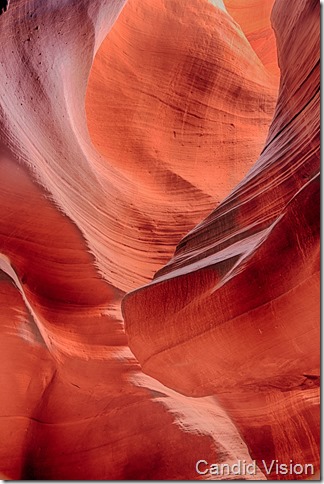
I think the oft photographed nature of this canyon makes capturing photos more of a challenge. Often I’d see an angle and could remember a photo I’d seen of the angle. The light was often subtly different, and in a slot canyon a subtle change in light can be magnified. I could have spent hours working through this canyon exploring angles, and the couple of hours spent there felt too short.
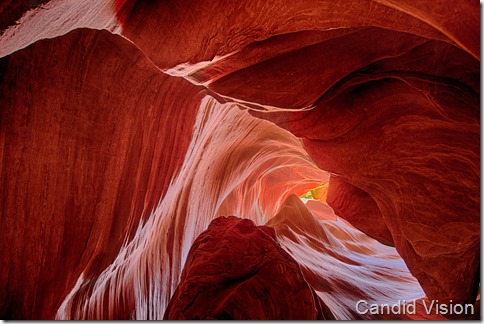
In early November the often photographed beans of sunlight into the canyon are gone. I did see a single time when the sun came into the canyon, but did not get a good photo of the brief phenomenon. So I tried to focus on the walls and the light coming around the lines and shapes within the canyon. It was near midday and while the shafts of light were gone, there were still moments of wonderful light coming into the canyon.
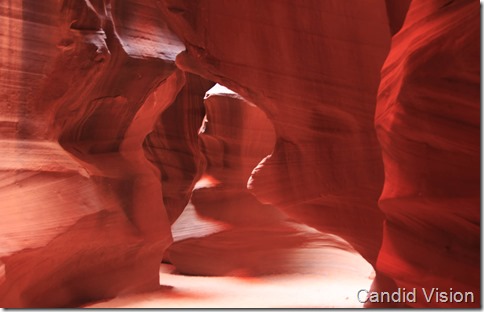
I can’t imagine how hard it is to photograph here during the more crowded tourist seasons. Even in the off season the place was fairly busy, and cooperation was the key to getting good results. I’d imagine in the summer the crowds would make good photos as much luck as timing. In November the weather was chilly, but after a couple days in the higher elevations on the Grand Canyon Rim and nights in a tent within it, I felt pretty comfortable with just a sweatshirt. I do feel the different time of year also give the photos a bit different look than the more commonly photographer summertime images.
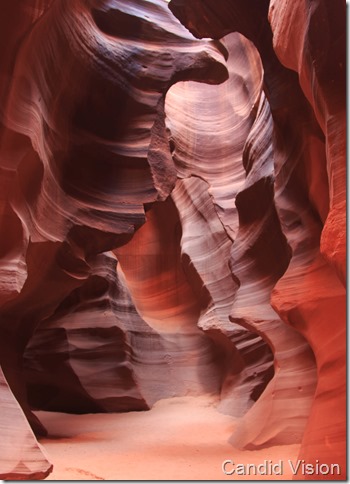
A few thoughts from this trip and photographing slot canyons. A tripod was a must for the Upper Antelope. It’s just too dark to get good color without longer exposures than handheld will allow. I also found manual mode to be a must along with experimentation. As the light changed settings had to change to get good exposures. I did a lot of exposure bracketing and sometimes preferred the images that were a bit over or under exposed compared to my initial look. A wide lens also was a must. I almost exclusively used my 24-105 f/4 lens with most of the photos taken at or close to 24mm. Other than people, there is little movement inside the canyons so longer exposures worked better allowing low ISO and smaller apertures for wide depth of field. Also try to avoid the sky in the photos. Below you can see a couple where the sky above is visible and it blows out completely. In the final edit of this photo I cropped out that top corner. This is a place where the subtle use of HDR to capture the wide dynamic range also seems worthwhile and I used that on a few photos.
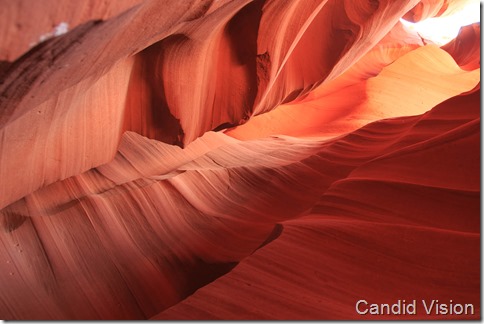
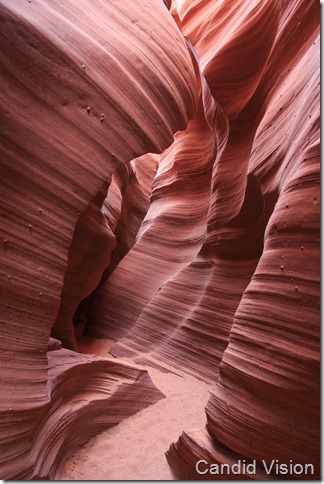
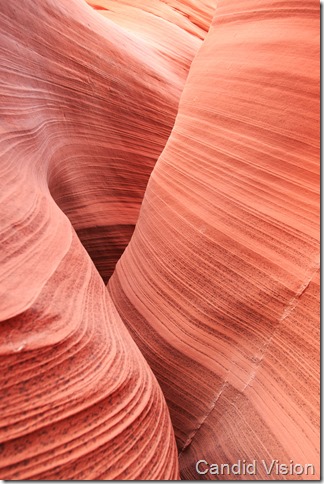
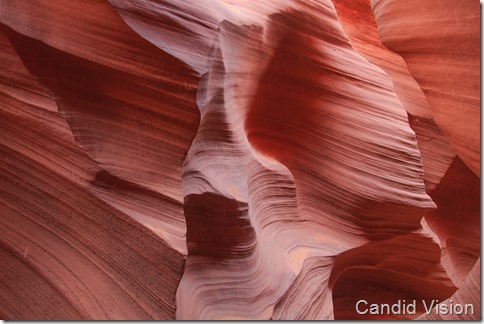 Overall I enjoyed this first canyon and would recommend the trip even though it’s not as colorful as Upper Antelope Canyon. Still I found the narrower canyon to be very photogenic with some interesting formations that made a nice contrast to the nearby and more photographed canyon. This also isn’t a casual walking trip as going through the canyon requires climbing ladders and squeezing through narrow passages. This is a short canyon and didn’t require a lengthy stay. After finishing here and working back out we then headed toward the much better known Upper Antelope Canyon a little further into the wash from the main road.
Overall I enjoyed this first canyon and would recommend the trip even though it’s not as colorful as Upper Antelope Canyon. Still I found the narrower canyon to be very photogenic with some interesting formations that made a nice contrast to the nearby and more photographed canyon. This also isn’t a casual walking trip as going through the canyon requires climbing ladders and squeezing through narrow passages. This is a short canyon and didn’t require a lengthy stay. After finishing here and working back out we then headed toward the much better known Upper Antelope Canyon a little further into the wash from the main road.